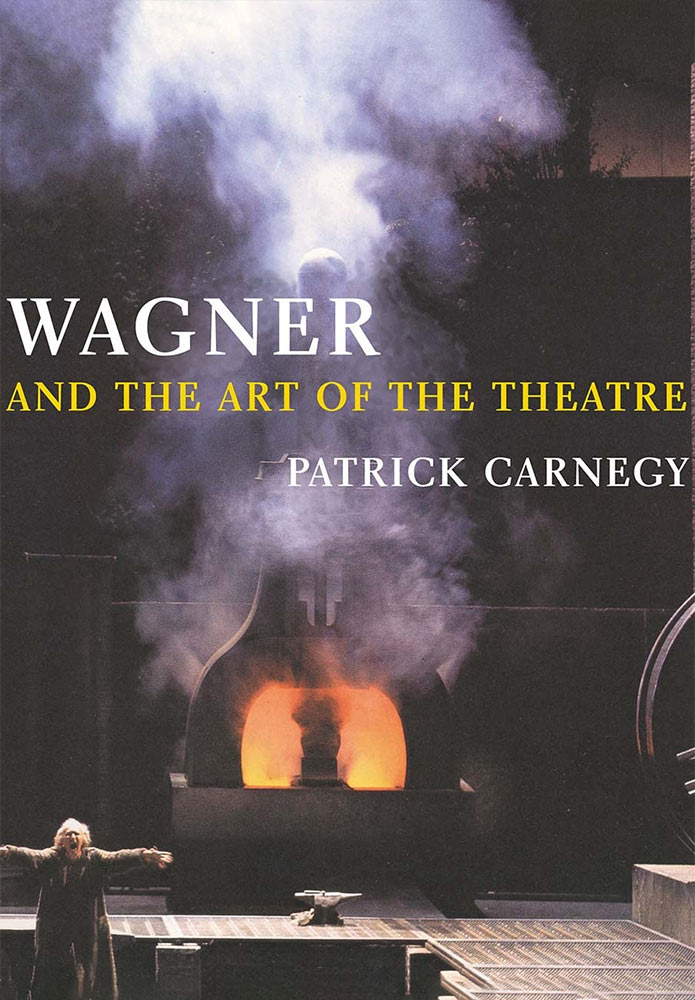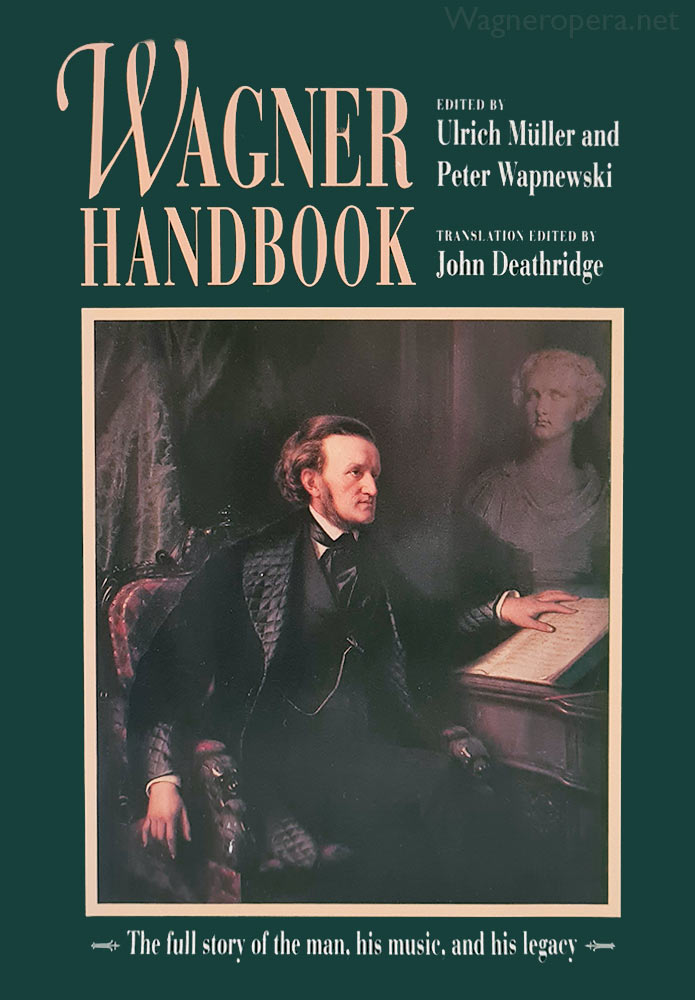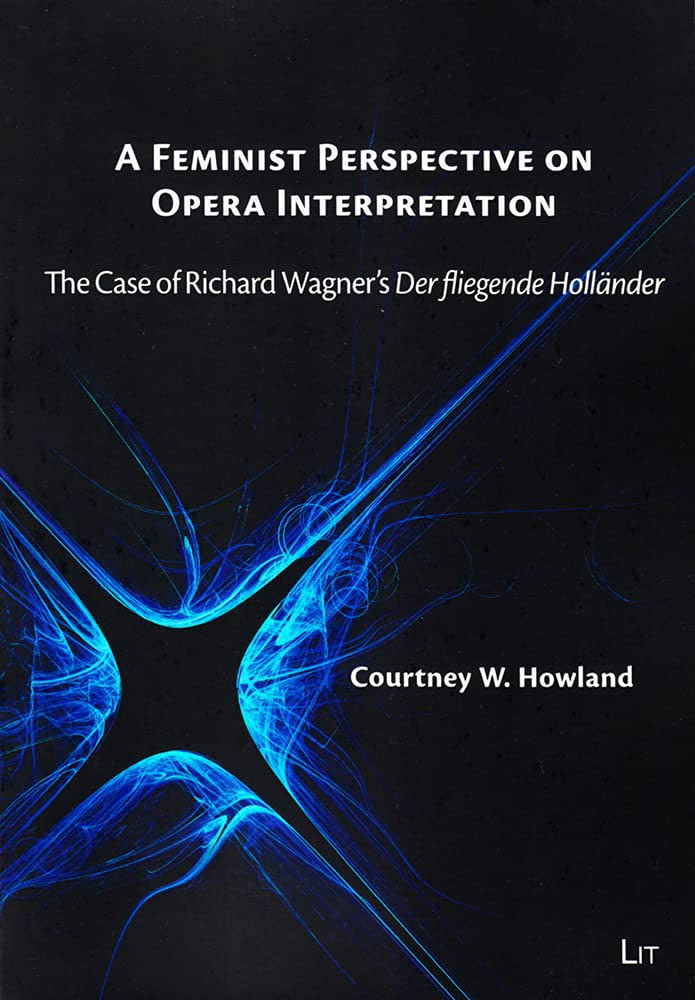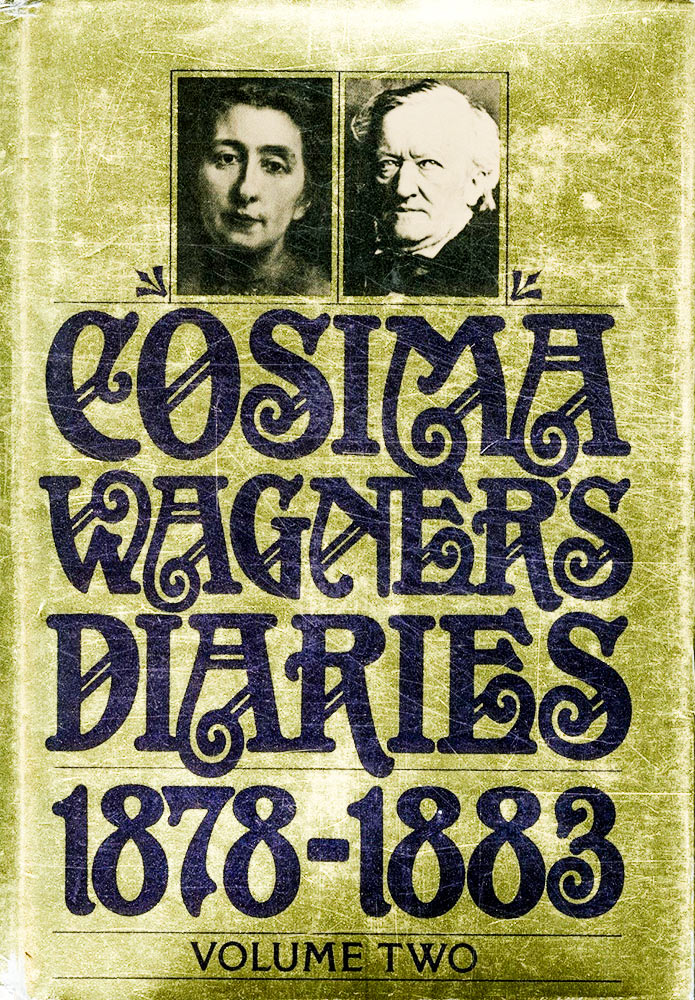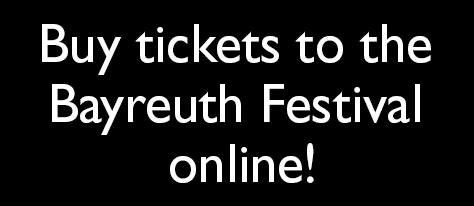Daniel Slater interview on his production of Tristan und Isolde at the Norwegian National Opera, Oslo, 2012
The creation of the self through love and death
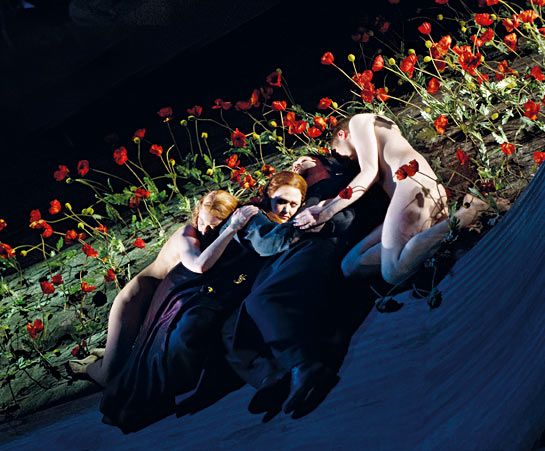
Daniel Slater, Wagner’s Tristan und Isolde is perhaps less burdened with the alleged political, historical, nationalist, anti-semitic and misogynic problematics that are so often addressed (by certain directors and certain critics as well) when it comes to other of his central musical dramas. However, how do you regard the quasi-religious idea of “Verklärung” or “Erlösung” through love and death in this work and how do you want to handle this in your production?
It’s very hard to answer this question without sounding horribly reductive, like trying to summarise the central tenets of a religion. As the questions points out, the notion of love-in-death is a quasi-religious issue, not least in so far as it is very hard to understand! I’ve no wish to make diminish the greatness of “Tristan” by making it more readily comprehensible that it in fact is, yet at the same time we’ve had to make certain decisions about what this issue means to us.
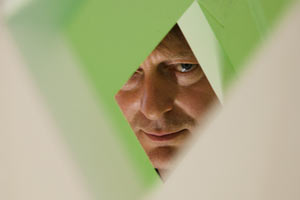
It seemed to us essential that the love of Tristan and Isolde springs from a death (Tristan’s killing of Isolde’s fiance in battle) and a near-death (from the wound which Isolde treats). In turn, Tristan twice wounds Isolde: first when their eyes meet and implacable hatred turns to ardent love, then when he courts her on behalf of Marke. But Tristan’s behaviour is itself motivated by wounds inflicted in childhood: the death of his mother as she gave birth to him, and that of his father shortly afterwards. When Isolde describes him as “Todgeweihte Haupt, todegeweihtes Herz”, it is to be understood in terms of these psychic wounds.
“Tristan und Isolde” is a love story, but it’s unlike any love story written before or since. Their love is certainly profoundly erotic, but – despite uniquely romantic music – this is not a tale of romantic love. What our Tristan and Isolde seek is a love without any social context or conditions, a kind-of return to the Garden of Eden. Yet, more than that, it is a love in which each becomes the other – or believes this to be the case. It’s a bond as complete as that of a son for the mother to whom he owes his existence – the very bond denied to the child Tristan.
Tristan’s love is, from the outset, death-directed. Because conditions and social contexts are unavoidable, Tristan seeks the perfect consummation of their love in the Wunderreich der Nacht, as the only place where he and Isolde can truly be together, one, forever united. He is prepared to throw away what would appear most precious to him – his life – in order to show that he values something else more highly: his love for Isolde. In true heroic fashion, he makes the ultimate sacrifice – but for love, not religion or Fatherland.
So, our production plays with images of sickness, wounds, death, paradise, parents and children throughout the opera. The Prelude offers an image of primordial Man and Woman, their bliss disturbed by light. The first act takes place on a hospital ship, where three wounded people – a man, a woman, and a child – are nursed by Brangaene. The child becomes, in the mind of Isolde, an image of the wounded Tristan. In the second act, he is the orphan Tristan. In the third act, the woman returns as an embodiment of Tristan’s pregnant mother, caring for her suffering son.
“Tristan und Isolde” has been described as a tragedy which takes place in the mind, and part of its impact surely depends on an audience believing that the longed-for consummation of Tristan and Isolde’s love is achieved in their death. Hence our production also encourages us to see events from the points of view of the two protagonists. The Seemann, the male chorus, the Hirt, the Steuermann – all these are sung offstage, voices in the minds of Tristan and Isolde. And thus we never quite leave the ship. It cracks at the point they acknowledge their love for each other, leaving them in a world apart. By Act Two, the crack has widened, and Nature has filled the void with a field of poppies, beyond which is a landscape of dreams. By Act Three, the parts of the trip have drifted apart like ice floes, connected by small wooden bridges, leaving the wounded Tristan alone in bed, isolated in the world he has created for love and for death.
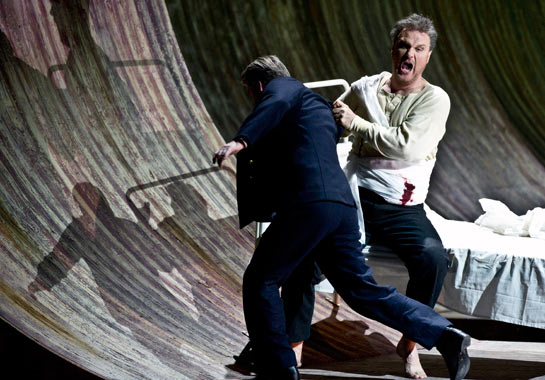
"Tristan’s behaviour is motivated by wounds inflicted in childhood: the death of his mother as she gave birth to him, and that of his father shortly afterwards. When Isolde describes him as “Todgeweihte Haupt, todegeweihtes Herz”, it is to be understood in terms of these psychic wounds." Photo: Erik Berg
In several of your productions the action is set to a more or less specific modern age and time. Your Lohengrin production (Geneva/Houston), for example, is set in a militarized 20th Century state. What is it that you want to achieve with this?
Specifically, our “Lohengrin” is set in a post-World War Two Eastern Bloc state, where the death of the leader has left a power vacuum leading to civil war (Telramund’s supporters versus Elsa’s) and Soviet intervention (King Heinrich). Doing so, I would argue that we were (linking to the question above) being perfectly true to the fundamental situation of Wagner’s original, while bringing the story a thousand years forward and a thousand kilometers east. After all, the context of Heinrich’s visit to Brabant is entirely military: “sort out your divisions so that, united, your country can help mine fight a war against our common enemy”. This situation surely speaks directly to twentieth-century experiences of military pacts, divided nations, satellite states. Moreover, the idea of a society subsequently pinning its hopes for the future on a “saviour”, only to see those hopes dashed, seemed to us to be utterly contemporary in its concerns.
Yet, perhaps curiously, the precise period of that production was not our primary focus. We were more concerned with Lohengrin’s journey: the miracle-performing Wanderer who is prepared to renounce his immortality in order to experience the mortal miracle of love. But, as soon as you start to tell that story, you have to let the Wanderer arrive in a human world, which entails deciding on a place and a period. In the end, you either put the singers in abstract costumes (which tend to be rather peculiar to Wagner productions) or you put them in clothes – in which case you at least have to base yourself in some period. The difficulty then is that people may think the period is the concept, even it is actually of secondary importance to the production team!
In the case of “Tristan und Isolde”, the period is perhaps less problematic. The tale isn’t grounded in some actual historical situation but rather in a myth. So, although that myth has loose roots in a medieval world, the essential conflict of the story is timeless. Likewise the theme (though I hate that word) of the opera is the creation of the self through love and death, so Robert and I wanted to find a period where notions of dying and sacrifice were recognisably different to those of a West European mind in 2012. Therefore, we eventually landed in a period that is loosely towards the end of World War One. Yet, as with “Lohengrin”, that is not where the heart of our production lies.
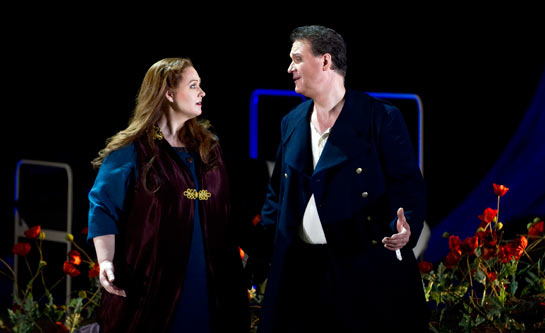
Karen Foster and Robert Gambill as Isolde and Tristan (Act 2) in Daniel Slater's production in Oslo. Photo: Erik Berg
In his late writings on the concept of music drama, Wagner implied that the drama is nothing more than the “Ersichtlich gewordene Taten der Musik” (music’s deeds made visible). How do you, as a stage director, cope with the idea that the orchestral voice be the real narrator in a work like Tristan?
Well, it certainly doesn’t diminish the job in hand: music’s deeds do have to be made visible, so the power of the orchestral voice leaves the director with a great deal to do! Perhaps more than any other opera I know, the music of “Tristan und Isolde” carries the narrative. At times, particularly in the rapture of Act Two, it is simply impossible to discern the words that the lovers are singing: what we hear with perfect clarity is the voice of the orchestra. Yet, despite the predominance of the music, we’re also dealing with an extraordinary, philosophically complex, libretto. The singers cannot lie back and surf on the beauty of the music: they have to find precise motivations for their words and put themselves into an emotional place where they communicate that text with truthful commitment. In the end, however, to refer back to the question about love-in-death above, it is the orchestral voice that suspends our disbelief, allowing us to accept – at least while we sit in the theatre – that Tristan becomes Isolde, Isolde becomes Tristan, and both are eternally united in death.
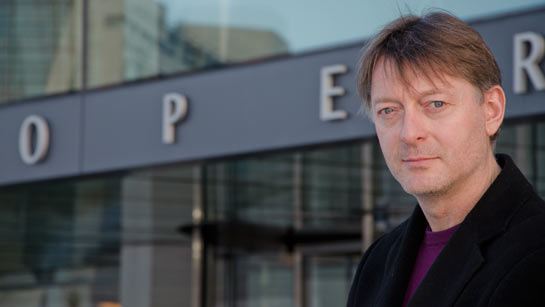
British director Daniel Slater returns to Oslo, having directed Puccini’s Manon Lescaut at the Norwegian National Opera in 2005.
Photo: Per-Erik Skramstad
There's no denying that the historical and cultural contexts surrounding Richard Wagner and his works are problematic. Is this something that you want – or need – to deal with when staging Wagner, and in particular, how do you relate to this when staging Tristan here in Oslo?
Perhaps linked to the issue of period, as well as the first question, “Tristan” seems less burdened by those controversial cultural contexts (nationalism, Christianity, anti-Semitism) that seem to weigh down discussion of other Wagner operas. Did the events of 1848 influence, several years later, the composition of “Tristan”? Probably. Is it central to an understanding of the piece? Probably not. Similarly, the biographical context is interesting, but has limited impact on an audience’s enjoyment of this wonderful opera. That, for example, Wagner fell in love with Mathilde Wesendonck shortly before embarking on “Tristan” surely influenced his composition, but does it really help us to understand the piece better? What must be dealt with is the philosophical context of the libretto. “Tristan” is, as Nietzsche pointed out, the “opus metaphysicum of all art” and certainly reading Schopenhauer and Feuerbach helps us to understand the philosophical background of this über-metaphysical opera. Whether that particular cultural context, once understood, should crucially determine the staging, I’m not so sure. Opera is primarily a visceral, not an intellectual, art form after all!
The German word, ' Werktreue' depicts a philosophy of production that implies faithfulness to the original work. On the one extreme, we have the Cosima Wagner approach viewing Wagner's own productions as absolutely authoritative, and on the other, the directors who’d go very far in the direction of deconstructing the original work. There is also the famous quotation from Richard Wagner, “Kinder, schafft neues!” (children, make it new!). In short, directors interpret the idea of ‘Werktreue’ quite differently. What are your thoughts on this and how do you proceed in your practice as a director when it comes to handling the question of how to be true to Wagner's work?
If the concept of “Werktreue” is taken to mean utter fidelity to every detail of Wagner’s set-descriptions and stage-directions, then Robert Innes Hopkins (the designer) and I are surely betraying the great composer no less than Tristan betrays his King. But the reductio ad absurdum of this philosophy would lead to every production taking place on an almost identical set and Marke stepping forward in the final bars of the Erklärung to bless the bodies of Tristan and Isolde.
If, on the other hand, the concept of “Werktreue” is broadened to mean fidelity to the spirit of the work, then I think we have been utterly true to Wagner. As the question implies, the exhortation “schafft neues” can encourage the childlike (in the best sense) imagination of the creative team to pursue wildly varying objectives. At its most extreme, this might entail treating Wagner’s opera as a canvas onto which the director paints his own view of the work – and indeed of the world. British directors tend to shy away from what they might consider vandalizing an opera in this way, partly because we tend to regard the director as the secondary artist to the writer, and partly because there is a long-held narrative tradition in our theatre. Robert and I strive to tell the story in the clearest, most relevant and most exciting way we can imagine. It would be nigh-on impossible to do this without being true to the spirit, if not the letter, of Wagner’s intentions.
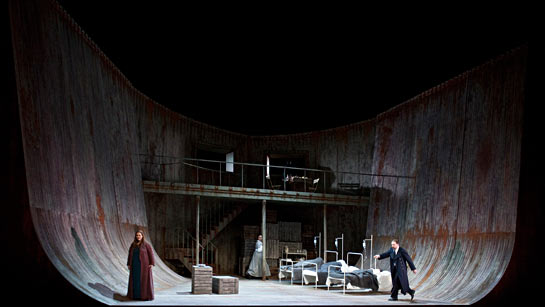
Karen Foster (Isolde) and John Uhlenhopp (Tristan) in Daniel Slater's production in Oslo. Scene from Act 1. Photo: Erik Berg
Daniel Slater's Wagner productions
- 2013: Tannhäuser (Tallinn, Estonia)
- 2012: Lohengrin (San Francisco, USA)
- 2012: Tristan und Isolde (Oslo, Norway)
March 2012: 4 (Premiere), 8, 12, 18, 21, 24, 28 and 31.
Musical direction: John Helmer Fiore
Director: Daniel Slater
Scenography and costumes: Robert Innes Hopkins
Lighting design: Simon Mills
Tristan: Robert Gambill / John Uhlenhopp
Isolde: Karen Foster
Brangäne: Tuija Knihtilä
König Marke: Magne Fremmerlid
Melot: Svein Erik Sagbråten
Ein Hirt: Brenden Gunnell
Ein junger Seemann: Daniel Johansson/Brenden Gunnell
- 2009: Lohengrin (Houston, USA)
Cast Simon O’Neill, Adrianne Pieczonka, Christine Goerke, Richard Paul Fink
Design Robert Innes Hopkins Lighting Simon Mills Choreography Leah Hausman - 2008: Lohengrin (Geneva, Switzerland)
Cast Christopher Ventris, Soile Isokoski, Jukka Rasilainen, Petra Lang
Design Robert Innes Hopkins Lighting Simon Mills Choreography Leah Hausman
Homepage
Interviews
Peter Konwitschny: I do not consider myself a representative of the Regietheater
Alexander Meier-Dörzenbach: There is so much more than mere sentimentality to this great opera
Detlef Roth: Amfortas' Suffering is Germany's
Kasper Holten: Tannhäuser's Rome narrative is perhaps all fiction—but it is his best story ever
Lisbeth Balslev: You come to Bayreuth for the sake of art
Iréne Theorin: Isolde is incredibly intense, and that really suits me
Graham Clark: I just switched hobbies
Anne Evans: At the time I hadn’t realised what a powerful impact it made
Johanna Meier on Isolde, Bayreuth and Ponnelle
Lioba Braun on Brangäne, Bayreuth and Wagner
Stephen Gould: Tristan is the end of the line
Penelope Turing: "Heil dir, Sonne!" Meant Something in those Conditions
Daniel Slater: The creation of the self through love and death
Sharon Polyak on West-Eastern Divan Orchestra, Wagner in Israel, Bayreuth
Wagneropera.net recommends
